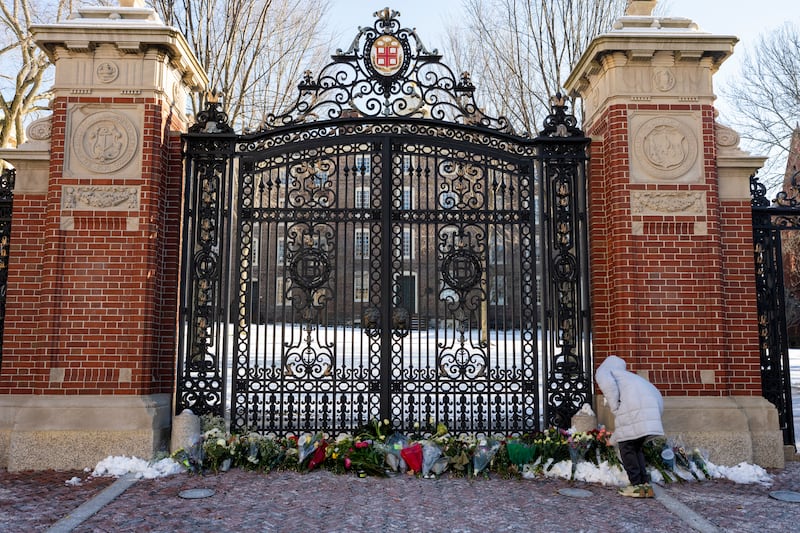On a rainy afternoon in 1886, Marguerite Moore boarded a boat in Manhattan to watch the dedication of the Statue of Liberty on Bedloe’s Island, in New York Harbor.
Thousands of spectators had gathered along the shore and in ships to celebrate the occasion, but Moore didn’t quite share their enthusiasm. The recently arrived Irish immigrant was a vocal member of the New York State Woman Suffrage Association, which had hired a cattle barge – the cheapest available vessel – to protest against the event.
Moore and her fellow campaigners were determined to expose the hypocrisy of unveiling a female statue symbolising liberty in a country where women couldn’t even vote.
They say we haven’t brains enough to vote, but they want us now to get out our slop pails and mops and help clean up the city ... I object to being a cake of soap
— Marguerite Moore
In one of the first suffrage demonstrations in the United States, Moore and several other speakers addressed about 200 people on the barge, a sea of banners waving across the deck as they sailed as close as they could to Lady Liberty. There are no records of what she said, but it was far from her last engagement with the women’s-rights movement in the United States.
READ MORE
Two years later Moore was the sole Irish representative at the founding conference of the International Council of Women in Washington, DC. A photograph of the group shows the Waterford-born woman standing beside some of the most prominent suffrage activists of the day. They included Susan B Anthony, Elizabeth Cady Stanton and Matilda Joslyn Gage.
When it came time to introduce herself, she told delegates of her involvement in the Ladies’ Land League, which had carried on the campaign of agrarian protest in Ireland after the jailing of Land League leaders in 1881.
Moore herself was incarcerated for her role in the agitation, but she got great political mileage from her three months in Tullamore Prison in Co Offaly – or “l’hôtel des mauvais sujets” (the hotel of bad subjects), as she wryly called it in letters.

Supporters sent bouquets of flowers and fruit baskets to her cell, and she was greeted by cheering crowds on her release.
At the International Council of Women in Washington, she declared that she had received the “highest honour in the power of the English government to bestow upon an Irish woman” in being imprisoned for her love of country.
Born Marguerite Nagle in 1846, Moore was orphaned in childhood and sent to be educated at a Catholic boarding school in Tipperary. She settled in Donegal after getting married and helped set up the Moville branch of the Ladies’ Land League. The organisation’s founder, Anna Parnell, is much better known, but a recent book by Niall Whelehan traces Moore’s important role as a “roaming agitator”, travelling through Ireland and Britain to rally support for the cause.
As Whelehan writes in Changing Land: Diaspora Activism and the Irish Land War, Moore inspired new emigrant branches and spurred on existing ones, challenging gender expectations in her forthright activism.
The Ladies’ Land League was wound up in 1882, and Moore left for the US with her children two years later. However, the struggles she witnessed at home continued to shape her activism in Gilded Age New York. She joined the pro-Parnell Irish National League of America, and later supported Sinn Féin.
Moore also took an active part in political campaigns by Henry George, an American advocate of land nationalisation, whose writings influenced many Irish nationalists.
Like George, she saw parallels between the structures of class inequality in Ireland and in the US. As she told a meeting of the Anti-Poverty Society in 1888: “Labour in America is being crushed by landlordism just as it is in Ireland.”
But she had a lighter side as well, gaining a reputation for droll soundbites. At a social reception described by Cosmopolitan magazine, she was asked if she resented her treatment at the hands of English authorities. “Why no,” came the response, because England had given her old shoes – traditionally considered to bring good luck – “with policemen attached to them”.
Another publication reported in 1897 that she had come back from a trip to England “as witty as she was when she went, and every bit as uncompromisingly un-English”. People had been “going crazy” over Queen Victoria’s diamond jubilee, she was quoted as saying. “It made me ill. That’s why I came away.”
Moore often spoke of feeling at home on US soil, but women’s inequality remained a thorn in her side. She told one suffrage meeting that she had come to the US assuming it was a land of liberty, only to find women had “not even the small right of municipal suffrage” enjoyed by some of their counterparts in England.
Most women won the right to vote in the US in 1920, but Moore and other campaigners faced many setbacks in the preceding years. One of her most memorable addresses came in 1894 after the defeat of a proposed clause to allow female suffrage in New York, for which she had tirelessly campaigned. “They say we haven’t brains enough to vote, but they want us now to get out our slop pails and mops and help clean up the city,” she said. “We are to be used as so many cakes of soap. I object to being a cake of soap.”
[ Ireland’s sculptures: Where are the women?Opens in new window ]
This Extraordinary Emigrants article was written by Dr Catherine Healy, DFA historian-in-residence at Epic, the Irish Emigration Museum in Dublin’s Docklands, an interactive museum that tells the story of how the Irish shaped and influenced the world.















